
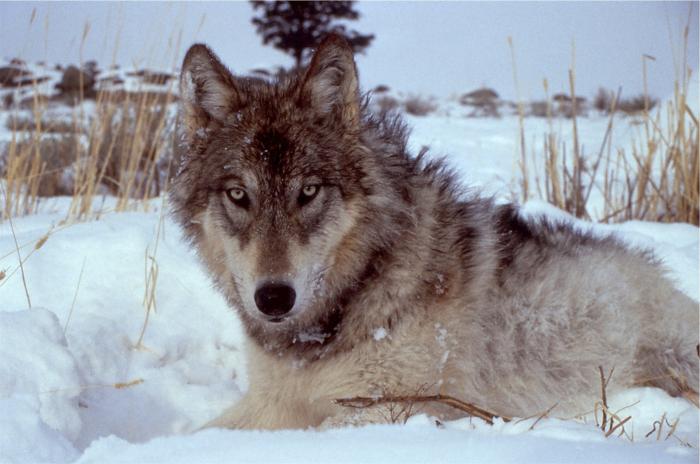
One of the most conservation-minded politicians currently serving in the United States is a Democratic state senator from Montana, Mike Phillips. He has served as a state representative in Montana since 2007 — in the House of Representatives and in the Senate — advocating for the Endangered Species Act of 1973 (ESA) and other environmentally responsible legislation.
Prior to his work in Montana’s state legislature, Phillips experience included important and varied tasks as a conservation professional. He was the leader of the Yellowstone Wolf Restoration Project with the National Park Service and continues to help private landowners dedicate large parcels of land to conservation as executive director of the Turner Endangered Species Fund (TESF).
Voices for Biodiversity’s Co-Director Kira Sadler spoke with Sen. Phillips in December 2017.
Tell me about the experiences that inspired you to become so actively involved with species conservation.
When I was little, about 10 or 11, I went quail hunting with my father, and that left an impression on me. But when I was 12, and I remember this vividly, I saw a National Geographic special on my parents’ little black-and-white TV that chronicled John and Frank Craighead's pioneering research on grizzly bears in Yellowstone National Park. And I said to myself, "I want to do that."
About 20 years later, I think I had bested the Craigheads because I was working in Yellowstone National Park with a large carnivore, not studying an extant species but trying to restore a locally extirpated one. That was the Yellowstone Wolf Restoration Project. So for as long as I can remember, I have fancied wild places and wild things and wanted to put my hat in the ring to try to promote both.
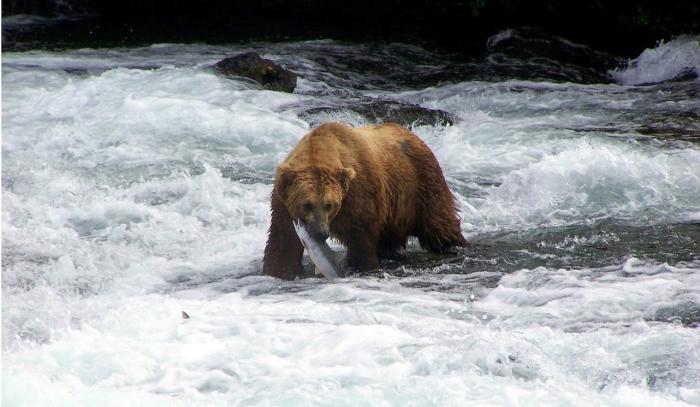
You have definitely done that. I am curious — have you had an interaction with another species, be it gray wolves in Yellowstone or otherwise, that was personally meaningful to you?
Gray wolves are fascinating. I like that they are constantly the underdog. I like that they are supremely social. I have personal sensibilities that sort of align themselves with wolves. But it wasn’t that I was just smitten with wolves — I was smitten with the notion of restoration.
I was involved in a red wolf project back in the early 1980s when restoration ecology was not really much of a discipline. And I had the chance to work with large carnivores. I did the gray wolf work. I went to Alaska and did a lot of grizzly bear work. I was exposed to endangered species recovery efforts, focusing on large, controversial carnivores early on, but it was the red wolf program that gave me the chance to think long and hard about imperiled species that needed to be restored.
Not that the gray wolf in the early ’80s was doing well. When I worked with [Dr. L.] Dave Mech in 1980, there were no gray wolves in the continental United States, excepting about 1,000 animals kicking around Northern Minnesota. I have always been intrigued by restoration, and the wolf provided a great opportunity to become very familiar with that process in a most intimate fashion.
I left Yellowstone Park in part because by that time I was 20 years into my career and I had grown solidly enamored with the idea of restoring imperiled species. Much of Yellowstone is about too much of whatever issue you're considering — too many elk, too many bison, too many people. As a scientist, I’m more interested in questions like, "Why are there too few black-footed ferrets? Why are there too few red-cockaded woodpeckers? Why are there too few Chupadera springsnails?
Then I met Ted [Turner]. He wanted to build a wolf restoration project on one of his big ranches in New Mexico. I said, "Ted, it's a beautiful ranch, but it's not big enough to be a stand-alone wolf project. So thanks, but no thanks. But if you're interested in a program that would focus on imperiled plants, birds, fishes, mammals or amphibians, I would be honored to consider joining forces." He said, "That sounds great, pal. Write something up." And so I wrote up what at the time was called the Noah Project — the notion was that private ranches could be viewed as arks of security for imperiled species. He didn't like the name, and we ultimately settled on the Turner Endangered Species Fund. Since the early summer of 1997, we have stood as the most significant private effort in the world to redress the extinction crisis, taking differential advantage of private landscapes, private assets and private actions.
Wolves were a wonderful tip of the spear. But what I find most intriguing is how we can push back on the extinction crisis. You might be surprised that I don't consider myself a wolf biologist. If I had wanted to have an almost singular focus on wolves, I would have never left Yellowstone. My intellectual attraction to restoration ecology was far stronger than just working in one place on one particular species.
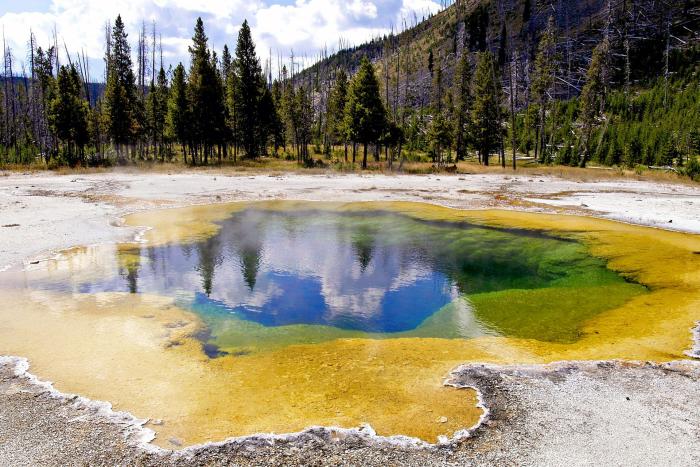
What lessons have you learned from your work using private lands for conservation?
I’ve learned that private lands can contribute mightily. For example, we are proud to be a member of the Half-Earth team. Ed Wilson's Half-Earth Project aims to save half of the planet for the rest of the world’s species, based on the conclusion that if you don't, humanity will be in trouble. It's articulated beautifully in one of Ed's more recent books, Half-Earth: Our Planet’s Fight for Life. We now have clear data that show that big private lands can be an important part of a readjustment to our relationship with mother earth.
When I left the Department of the Interior, I told Ted, "Together we can make clear that private lands and private actions can matter." By no means is this to suggest that public lands and public actions matter less — they are supremely important. But certain private individuals have a tremendous opportunity to contribute differentially and redress the extinction crisis. We're trying to make people aware of the extinction crisis and recruit them to the cause of fighting for imperiled species.
Land doesn't really cost you anything when you're supremely wealthy. People that are rich don't have millions of dollar bills sitting in a room somewhere, they have a spreadsheet with a whole bunch of zeros on it. I would say to those individuals, "You know what you could do? You could take some of those zeros and simply move them to another piece of paper. You can take some of those zeros and move them to a piece of paper that says you own this piece of property. And the property itself has value. And now you have something that's far more real than zeros on a piece of paper, something that you can feel and touch and walk across and work and celebrate and make better. And by doing so, you can be part of the solution to the extinction problem."
We're trying to reach out to private landowners — people who have Turner-esque means. The National Wildlife Federation is far better suited to reaching out to the millions and millions of homeowners that can make a contribution by looking at their backyards in new and exciting ways.
No matter who you are and no matter what your moral compass is, the extinction crisis should matter to you. The best science tells us that humanity’s fate has always been tied to the health of local landscapes. We think we can deliver that message to high-net-worth individuals. We have stories that clearly demonstrate that private land and private actions can make a difference by improving the security of imperiled species. By the spring of '95, that was clear from my experiences with red wolves in the Southeast and gray wolves outside Yellowstone Park — even there, in the great big landscapes of the western United States that are very much defined by public lands, private lands can matter. It was those wolves that allowed me to say to Ted, "Together we can make clear that private lands can matter."
I completely agree that every individual should care about species conservation. What do you think are the best actions that everyday people can take to prevent species extinction?
It's tough for private individuals. Many people are so divorced from landscapes that they wouldn't even be able to tell you where milk comes from. But what can people do? In our country, who serves in elected office really matters. I will admit my bias — I am a state legislator and have been for 11 years, and I will hold my senate seat through the end of 2020. I place high value on the service of elected officials. I also recognize that no one can serve until they're elected, so the electors really do matter. You have to cast votes that are mindful of the importance of conservation and the extinction crisis.
If you asked people to list the biggest problems that confront humanity today, they would probably not list the extinction crisis. Yet the problems that would be at the top have to do with nature in some way. I believe that human conflict around the world is to some extent a function of degrading habitats.
Many of the people that we see doing desperate things are themselves desperate — they don't have a future they are excited about and that's worth seeking out because they're living in a landscape where nature can no longer provide everything they need. You can admit my bias as a biologist, but when you get right down to it, everything that's alive today needs food, cover, water and space. Most humans buy these things but you have to have food, you have to have cover, you have to have water and you have to have space — no matter how you secure them. Many landscapes around the world can no longer provide these things, and an important manifestation of that is this extinction crisis that is growing in breadth and depth.
So what can folks do? First, acknowledge that it is an overarching problem that captures the essence of a host of other problems — habitat degradation, the depletion of aquifers, forests being cut down, dead zones in the ocean, overfishing, overharvesting and so on. What people need to do is cast an informed vote, which is a hard thing to do, but that’s the burden of democracy.

People should acknowledge that there is a problem and recognize the importance of voting for people who also acknowledge that there is a problem. Then you can look at lifestyle changes. For example, everybody tends to recycle, but food habits often to get overlooked. Eating less meat is one important step. Meat is extremely expensive from an ecological perspective because of the way the trophic [feeding] system is designed. About 90 percent of the energy that moves from one level of the trophic system to the next is lost in the process. And livestock have become so common around the world that they are posing other environmental problems. So consider your food habits. You don't need to eat a lot of meat — you can get plenty of protein from other sources.
What differences have you seen between conservation on public lands and conservation on private lands?
I'm a big champion of public lands. I am honored to be a public servant, and I recognize that some of the big, sweeping changings that need to take place to advance the conservation of biological diversity will have to be publically based. I also know without a doubt that private efforts also matter.
One of the differences between the two is that private efforts usually operate on a slightly smaller scale. Some private projects don't really need much support from the state or a federal agency. Our projects are conducted in very close collaboration with state and federal agencies because we don't have the authority to move forward without their assistance, typically in the form of permits. Most of our species have the capacity to range outside of Ted's properties. In many of these projects, we are just part of a bigger effort being shepherded by a state or federal agency. Just like in public initiatives, the most significant private efforts have to be collaborative.
In many ways, the private initiatives we have built out are very similar to the public initiatives I have been part of, just slightly smaller in scope. We don't need to worry about environmental impact statements because we're not a big federal agency with responsibility to the public at large. We are in more control of our destiny in some respects but are forever mindful that collaboration with state and federal agencies, and sometimes adjacent landowners and conservation NGOs, is extremely important.
As I mentioned earlier, I was enamored with imperiled species and restoration projects early on, and leaving Yellowstone was a very difficult thing for me to do. I could've spent 30 or 40 years as a senior administrator in what I believe is the world's greatest conservation theater. I said to Ted, "These are wonderful ideas that we have, but sometimes state and federal agencies move at a glacial pace. We may be stuck waiting for something to happen, the issuance of a permit, for example. And are you OK with that?" He said, "I'll tell you what, Mike — here's the deal. We will be as patient as we need to be, but when the ball is in our court, I expect us to move quickly." And that's exactly what we have done. We are more than willing to embrace a long clock — and there aren’t many groups out there that would purposely embrace tortoise time.
We have the only significant effort in the world to recover the Bolson tortoise: Gopherus flavomarginatus is the scientific name. The Bolson tortoise is the largest reptile in North America. Gertie is the oldest animal in our program and is probably close to 70 now. And he's big — I bet he weighs 30 pounds. Bolson tortoises are slow to mature. They don't reach reproductive age until they’re about 20. You expect very few of these tortoises to make it past being a hatchling, then a yearling, to being about 3 years old, big enough and with a hard enough shell to withstand being picked up by a coyote, carried a quarter mile and dropped. Yet the Turners didn't blink. We had this tremendous opportunity to become the tip of the spear for the Bolson Tortoise Recovery Program, which we willingly did. So we're okay with time. And Ted has built out an administrative future in close collaboration with the Internal Revenue Service that should give us a chance to be here, having these kinds of conversations, a hundred years from now.
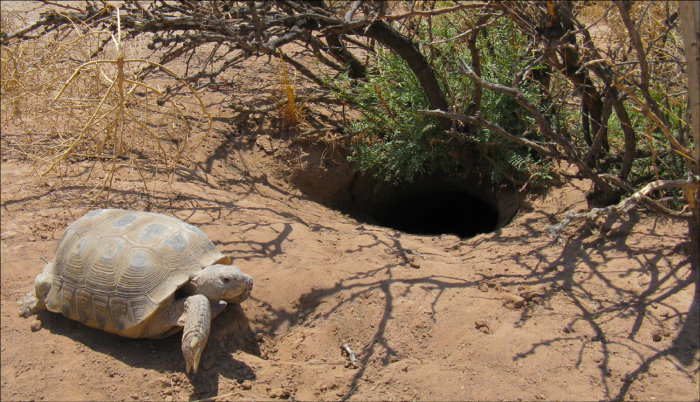
You said that one of the best things that people can do is make an informed vote. In your opinion, what is the most important piece of legislation regarding the environment right now, whether it is already in place, has the potential to become law or is at risk?
There are several initiatives underway that would significantly weaken the Endangered Species Act, and they all need to be furiously opposed. While the ESA is not the best that it could be, it is the best we have. It stands as a clear expression of this country's determination to say, "Species will not go extinct on our watch."
It is absolutely wrong for people to claim that the Endangered Species Act has been so ineffective that it needs to be significantly amended, if not set aside altogether. That is simply a gross misunderstanding of what has happened since the 1973 bill became law. I hope Voices for Biodiversity will help people come to recognize that there's a need to defend the ESA and, ideally, strengthen it.
Most people live conditional lives. If I don't watch this, I can watch that. If I don't buy this, I can buy that. If I don't do this, I can go do that. We have all kinds of "if not this, then that" options, and I think that frames how we view the world. Extinction is not conditional. Republicans always seems to say, "Oh, we need to consider listing and delisting actions with a sharp focus on the economic consequences." This particular Congress is looking at an amendment to the ESA that would allow listing and delisting to be viewed in part through an economic lens. This has been attempted before, back in the Reagan administration, for example, with Secretary James G. Watt. And Congress has consistently said, "No, we are going to look at listing and delisting based on the best science that's pertinent to the biology of the species in question."
Yet people will look at me and ask, "Why should it be that way?" and I say, "Look, because we know that there are always work-arounds for economic consequences." There are no work-arounds for extinction. It is not conditional. It is absolute. And if we lose the Chiricahua leopard frog, another heaven and earth must pass before it could ever rise again. So I would say that efforts to defend the ESA are of paramount importance.
Next, it would be great if there was sufficient momentum and a proper cast of characters to strengthen the law. I don't see that happening, but we can at least hope for an effective defense. And that’s irrespective of particular issues such as health care, national security, environmental issues and immigration.
This country needs to take as many steps as possible toward removing the polluting effects of money on our political system. One could make the case that our government has always been for sale, but I think that is certainly the case today. I think it is a fundamental mistake for the Supreme Court to equate money to speech. I would say to Chief Justice Roberts, "Okay, fine, Judge. You get to say money is speech — fair enough. If I have a bunch of money, and I want to use it to support a particular cause or a particular candidate, that's fine. That's good. That's the American way. I have that right. But I should do the talking. If it's my money, it has to be my speech. It can't be my money being quietly and sneakily provided to somebody else to do the speaking. If money is speech, then it has to be my money and my speech."
I think money is killing our political system. How many millionaires serve in the United States Congress compared to the population at large? From my own work with millionaires and billionaires, I can tell you that they do not see the world the same way as most folks do.
What would be an ideal vision for the Endangered Species Act? How could it be better than it is now?
I think there are certain things the law should make clearer. It should be clearer about the relationship of ecosystems, habitats, biotic settings and landscapes to the particular species that are being addressed. The law has a single-species focus, which I can celebrate to some extent because I'm willing to admit that I'm not smart enough to understand how ecosystems operate. I'm not even smart enough to understand how assemblages of species operate. I struggle just to understand how a single species operates.
When I was a grad student at the University of Fairbanks, we would occasionally invite notable scientists to come up for a couple of days and give seminars and public lectures. The year that I was the organizing lead, we invited renowned wildlife ecology professor Dr. Durward Allen. He worked at Purdue University in the late ’40s, ’50s and ’60s, a contemporary of Paul Errington and Aldo Leopold, two other important people in the field of wildlife science.
I got to know Dr. Allen pretty well. One day we were hiking in Denali Park and he said, "These settings, Mike, where we get to work as wildlife biologists, are the most complicated things in the universe." And I've since come to realize that he couldn't have been more right. So the Endangered Species Act needs to make the relationship between single species and landscapes clearer.
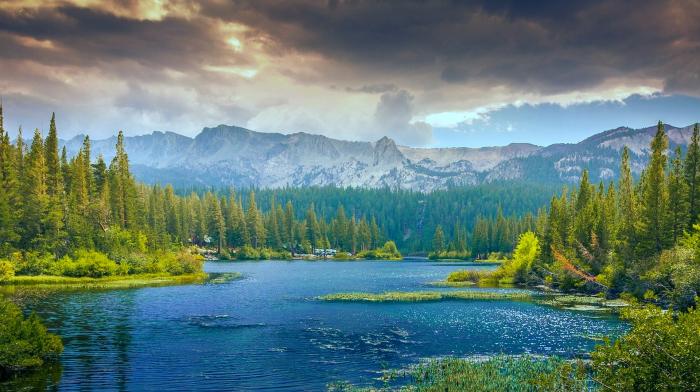
I have my copy of it right here. I'm going to read you something so you know exactly what I mean. It says, in section 2B, "The purposes of this Act are to provide a means whereby the ecosystems upon which endangered species and threatened species depend may be conserved . . . " and I want that to be strengthened. We should think about changing "may be conserved" to "shall be conserved," at least.
I also think the law needs to be clear about the meaning of the word "range" when it says a species is about to become extinct throughout a whole or significant portion of its range. The law is silent on what range they're referring to. The cowardly approach that the United States Fish and Wildlife Service has employed lately — and I hold the United States Fish and Wildlife Service in very high regard — makes “range” synonymous with the species’ contemporary, current range. To me, that's crazy. That can't be what Congress intended. The word “range” has to be synonymous with the species’ historical range — otherwise, some flagship species would have no standing in the Endangered Species Act.
The red wolf, the California condor, the black-footed ferret, the Mexican wolf — there’s four right off the top of my head. Four species that had no current range when the Endangered Species Act found full application. There were no red wolves in the wild. There were no Mexican wolves in the wild. There were no black-footed ferrets in the wild. There were no California condors in the wild. So clearly they can't think that range means current range because they've already spent millions upon millions of dollars on four species that had no current range.
The real value of laws is that they are mutable — they can change and improve over time. I think that's what the Endangered Species Act needs, some freshening to make the intentions of Congress clear. And for Congress to strive to make it even better than it is today.
I would also make sure people understood the intentions of the Endangered Species Act. This may be my bias as a legislator, but it certainly fits with how the three branches of government tend to interact with one another. When the executive branch struggles with how to implement a law, and the judicial branch struggles with defining the meaning of a law, both of those branches are challenged to understand legislative intent. That creates confusion.
Section 2A of the Endangered Species Act — Findings, Purposes, and Policy — is extremely important. It says things like, "The Congress finds and declares that . . . these species of fish, wildlife, and plants are of esthetic, ecological, educational, historical, recreational, and scientific value to the Nation and its people . . . " — all of those things count collectively.
Yet you don't often hear people speak about recovery because it advances scientific value. Or recovery because it advances historical value. They tend to think of the law in much simpler terms. Yet I would say that a common-sense reading of that section of the Endangered Species Act shows that Congress did make its intent clear. That kind of reading would likely conclude that Congress intended a lot.